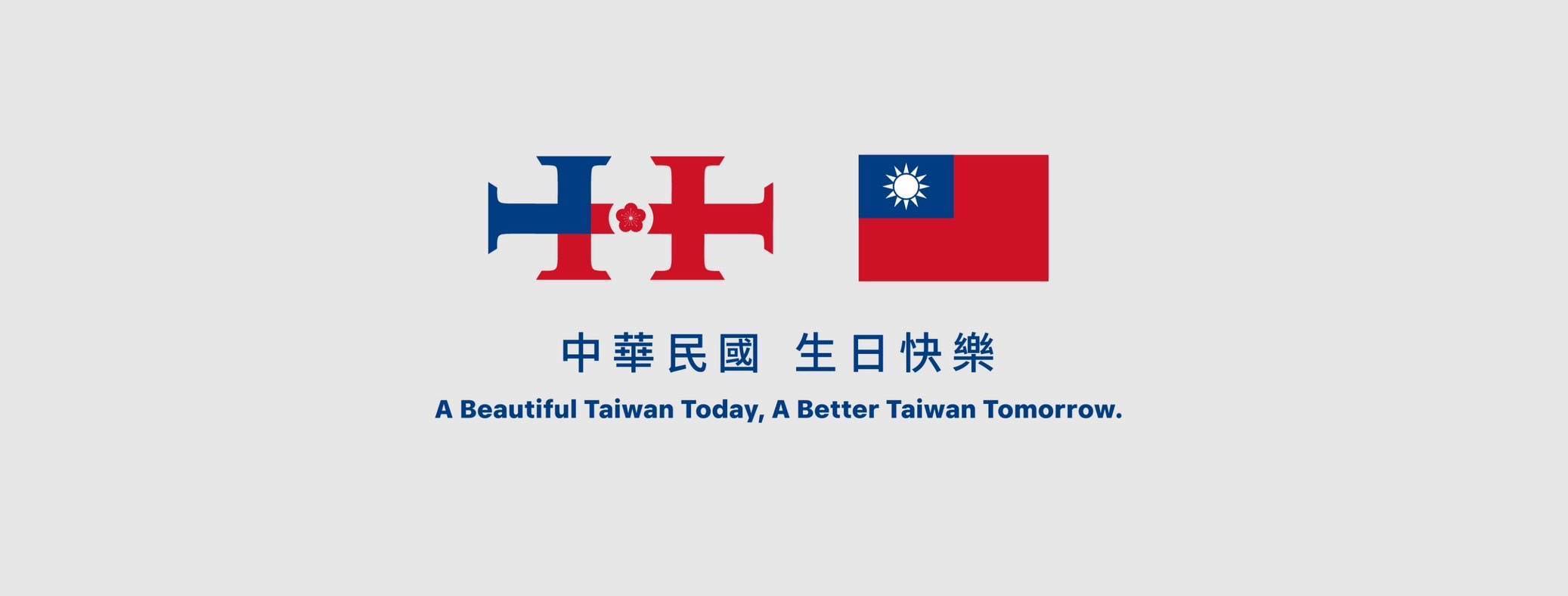by Brian Hioe
語言:
English
Photo credit: 中華民國 讚國慶/Facebook
THE NEW LOGO for National Day was unveiled earlier this week. However, the logo proved a far cry from the modernist designs of the preceding years, in that the National Day logo took the form of a red and blue logo with a plum blossom in the middle. The plum blossom is the national flower of Taiwan.
The logo is seen as representing a return to the aesthetics of the Ma administration, with retro rather than modernist aesthetics. This perhaps gestures toward how the DPP has aimed to frame its politics as being those of the future, of the generation that will inherit Taiwan, while the KMT has more often appealed to past tradition.
The National Day logo announcement
To this extent, under the Tsai administration, one saw the use of the colors of the parties represented in the Legislative Yuan for National Day logos–symbolizing Taiwan’s contemporary democracy–rather than the traditional red and blue of the KMT. The use of red and blue in National Day iconography, as well as the national flag, is reflective of the KMT party-state seeing as these are the KMT’s party colors. This is also why the KMT’s logo is featured as part of the national flag.
That being said, the 2023 National Day logo under Tsai Ing-wen, during her last National Day, also featured red and blue. This was an attempt to signify that the Tsai administration did not aim to break from ROC institutions but affirmed the ROC as an independent polity in the face of the PRC.
Past National Day logos
It is thought that the logo design is because Han Kuo-yu, as president of the Legislative Yuan, with the KMT having a slim majority in the legislature over the DPP, is in charge of National Day arrangements. Unsurprisingly, then, there was no mention of “Taiwan National Day”, as National Day was framed by the DPP in past years. But the logo is likely to be mocked as another example of schlocky aesthetics by the KMT, which has struggled with appealing to young people in past years. This is reflected in how campaign advertisements by the KMT have routinely been mocked in past years. Otherwise, it has been suggested that the National Day logo could potentially be an “H” shape, as In Han’s name.
Still, this reflects the divided government that exists at present even when it comes to national celebrations. The presidential inauguration, on the other hand, decidedly reflected the standpoint and priorities of the Lai administration in attempting to synthesize contemporary progressive and pluralistic Taiwanese values with an emphasis on defense.
Ironically, the Lai administration itself faces pressure to signal its continuity with the Tsai administration and that its cross-strait policy does not differ from Tsai’s with his inaugural address. Though Lai sought to do that in his inaugural speech, this was somehow interpreted by American observers as a pro-independence provocation.
But it is to be seen how the KMT attempts to politicize the issue as well, with the KMT likely to frame whatever Lai says as dangerously pro-independence and, in that way, provocative of China. Yet, as with contestation about culture more broadly, the KMT is also likely to lash out at what it frames to be efforts to foment “cultural Taiwanese independence.”



